I decided to run braided stainless fuel lines from the tank to the fuel rail. I used -8 for the supply and -6 for the return.
Probably overkill for the car now, but I figured I could easily upgrade the pump or fuel rails later if I had already run the lines.
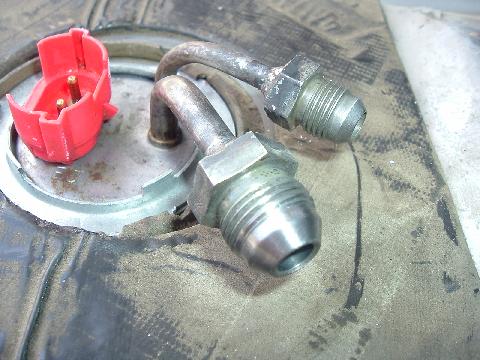
I used a 190 lph pump from BBK on the stock pickup.
I picked up some steel AN plugs and drilled them to fit on the tubes coming out of the pick up, then had them welded on.
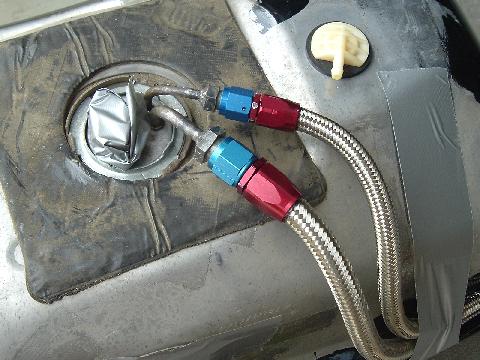
Ready to go under the car.
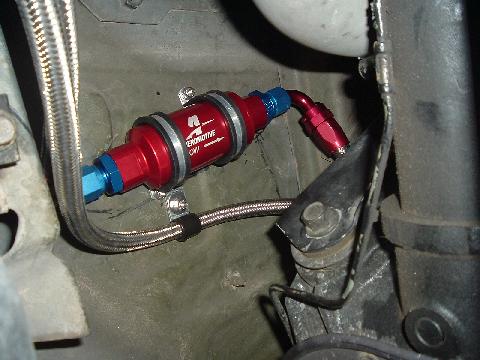
I mounted an Aeromotive 12301 filter above the rearend, between the exhaust and the area where the upper control arm might move.
This is generally how the factory lines run.
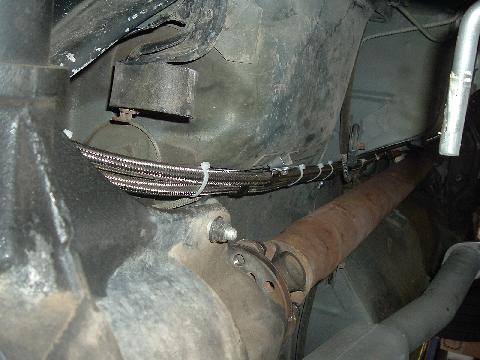
I ran the lines in the driveshaft tunnel. Again, about where the factory lines ran.
You can see right in front of the rearend I used one of the factory brackets to screw the clamp to.
I used Aeroquip fuel line and clamps. I used 3/16 steel pop rivets to fasten the clamps to the sheet metal.
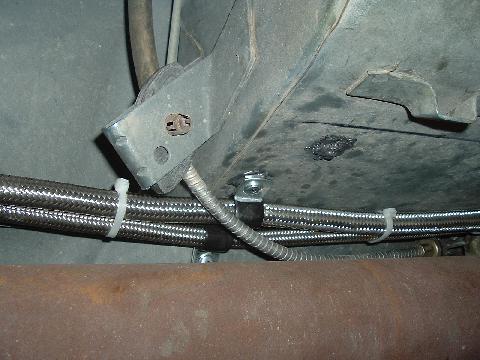
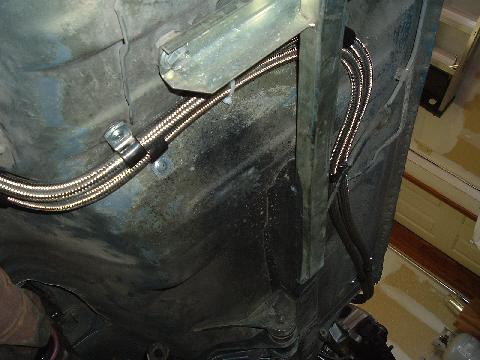
This is where the factory lines come out of the tunnel and cross over to the passenger side floor.
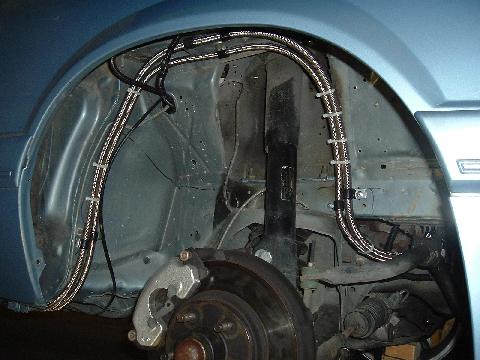
This is similar to the factory routing. I went abouve the tire and forward. The factory lines stay low and run behind the strut.
I didn't think I could do that and maintain the minimum bend radius required by the fuel lines.
This is all covered by the inner fender liner, except for the part that goes under the frame rail to the engine.
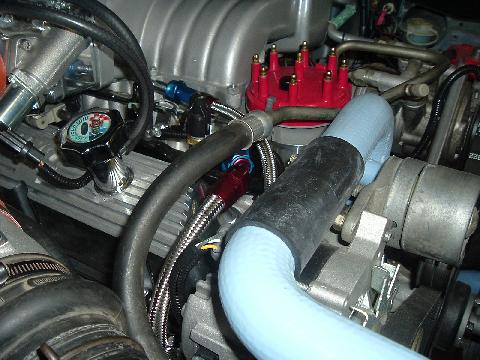
I used adapters to go from AN to the stock fuel rails.
AN fuel rail adapters: UPR AN Adapters or Ron Morris AN Adapters Cartech has these too
I must warn everyone that stainless, braided hose may not be the best solution. Everything shown on this page cost over $300!
I thought I used the best of everything, Aeroquip hoses and fittings with a few exceptions. I thought this would last a long time and be safe.
Well, with less that 100 miles on it, it started leaking badly from under the fender liner. After I took it apart, I found the supply hose leaking
through the braid, in the middle of the hose. There was no sign of damage. I removed the hose from the car and pressure tested it with compressed air.
I must admit Aeroquip's assembly instructions recommend testing the hose at three times the working pressure. Since I didn't do that, it is my fault I
went through the hassle of installing this on the car and then having to remove it and replace it.
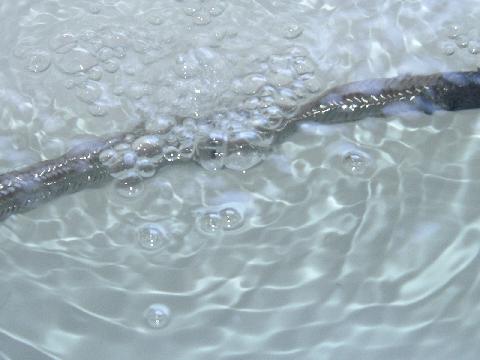
I went searching around the web to see if anybody else has had problems with using this kind of hose for fuel lines.
Here is what I found:
Braided Fuel Lines - Help!
Beware of Russell ....
Aeroquip Service Bulletin AA135
So, it sounds like the ultimate solution is to minimize the amount of flexible hose and use braided stainless teflon lined hose for the rest.
Pure Choice Motorsports offers braided stainless teflon lined hose and fittings up to -8AN. They also have a Fuel Line Kit for 5.0 Mustangs
that might be a nice starting point for a project.
I'll be re-thinking my set up. I have to admit, one incident of fuel spraying out from under the car has got me concerned about the reliability
and longevity of rubber based hose with today's nasty gasoline. There is probably a good reason Ford chose to use nylon based hose for the flexible
parts of the stock fuel lines and fuel rail crossovers.
Ron Morris Performance has fittings and adapters to use nylon tubing for custom EFI installations, including tank and fuel rail
adapters. The only problem with this is they don't allow for larger tubing sizes. Nice stuff though!
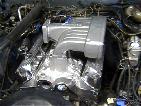
Back To EFI Conversion
Send comments/suggestions to Dan Dilts
Page last updated February 26, 2006